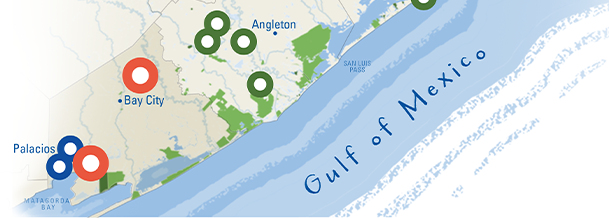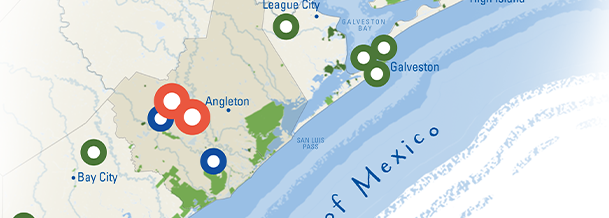Uncover the captivating history that shaped the Upper Texas Gulf Coast. With easy access to coastal and inland waters, abundant bays, fertile soils, and extended growing seasons, this region has drawn many throughout history. First the Karankawa, followed by Spain, France, Mexico, Anglo-Americans, and then the United States. The opportunity for land ownership and economic prosperity, plus security from debt collectors and oppression, shaped the European and Anglo-American drive into the region.
Slave-based agriculture, immigration and the discovery of petroleum were key factors in economic development, which earned Galveston the names ‘Wall Street of the Southwest’ and ‘Ellis Island of the West’. This opportunity and independence-driven spirit is integral to the DNA of Texas. From indigenous peoples, colonizers, and formerly enslaved Africans, to voluntary immigrants from across the globe, this region’s history is fueled by stories of freedom—both past and present.
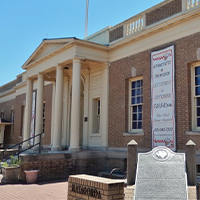

Economic opportunity and strategic location drew early French and Spanish explorers to Texas. Delve into exhibits on early Texas exploration, ranching, and impressive artifacts from the La Belle shipwreck. Children will love interacting with a historic model town full of shops, homes, and props!
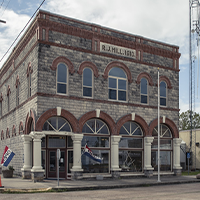
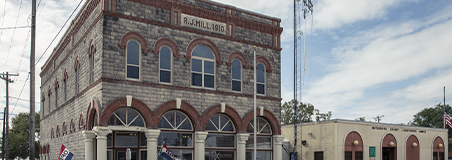
The Texas coast is part of the ancestral and current homeland of the Karankawa—a semi-nomadic people renowned for their archery and fierce independence. Come see artifacts of their daily lives alongside exhibits on the critical marine ecosystems, and a replica of La Belle, La Salle’s long-lost ship.
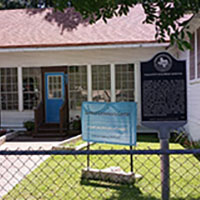
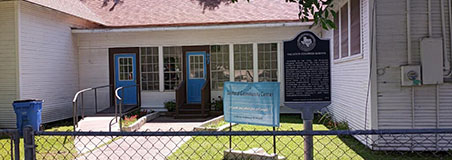

Built in 1929 during the segregation era, The Palacios Colored School became a daycare center following the end of segregation and now serves as a community center. Throughout its history, this building has been a cornerstone of life for African Americans in Palacios. It has now been restored and dedicated to Dr. and Mrs. Sanford, a young couple who ran the school for many years.
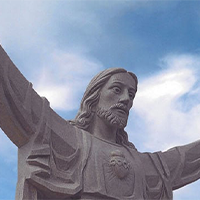


Overlooking the bay in Palacios, an iconic 15-foot statue of Jesus Christ honors fishermen lost at sea. This statue, generously donated by Tuyen Vu—a member of the Vietnamese community who sought asylum here during the Vietnamese War and now calls Palacios home. Next to the water, this location lends itself to reflection.


Drive through the Historic District in Bay City to see beautiful examples of late 19th to mid-20th century architecture, including Craftsman, Colonial Revival, Tudor, and more. Check out The Southside Driving Map.
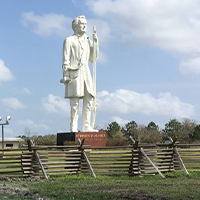

A 76-foot statue of Stephen F. Austin looms over the land he procured from Mexico —where he established the first Anglo-American colonies in Texas. Come learn about the colony and the beginnings of the Texas revolution, plus explore the trails and pack a picnic to enjoy by the Texas-shaped pond!
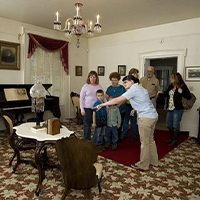

134 years of history and enterprise are reflected here and told through the stories of families—both enslaved and free—who worked to build Texas. As ownership changed from the Austin colonist, Martin Varner, to the Pattons and Hoggs, this land was used for sugarcane and cotton production, cattle ranching, and oil drilling.
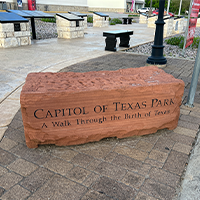
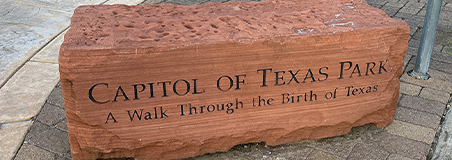

Located on the site of the Republic of Texas' first capitol, this narrow strip of land provides a concise walk through the Texas Revolution. Peruse 21 historical markers, each depicting the people and events that helped shape the early Republic.
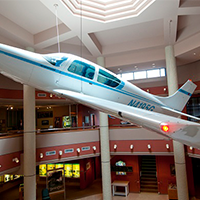
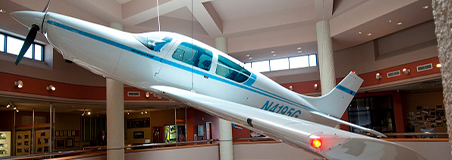

Through interactive and animatronic exhibits, experience the city’s history from the indigenous Karankawa to the plantation era to the modern petroleum era. Come discover why some city streets are named “This Way” and “That Way.”

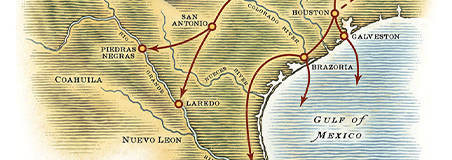
Researchers recently begun uncovering and cataloging how many enslaved people in Texas fled south to Mexico. Some seeking freedom fled from or through Brazoria county, while others stowed away on ships leaving Galveston for ports in Mexico. Illustration by Erwin Sherman.
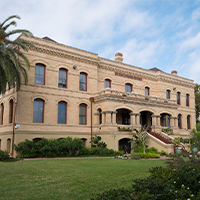
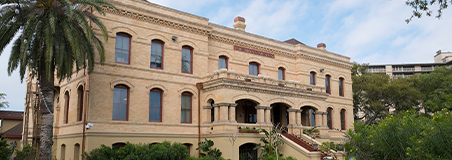
Get a true sense of the Texas spirit by exploring the Indigenous, Spanish colonial, Mexican and Anglo-American influences in the region as well as the world’s largest collection of artifacts, artwork, and documents related to the history of Texas and the American West. Don’t miss the indigenous hunting tools, Cabeza de Vaca’s record of his travels, and an intricate model of the galleons the Spanish used for their conquests.
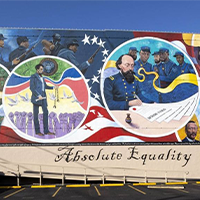
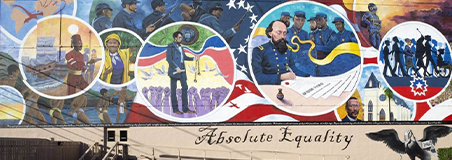
The Juneteenth Legacy Project Mural and Storytelling Space sits in the Strand Historic District where those federal orders were first read, right across the street from where enslaved people were once sold. Featuring the works of local Black artists in the gallery, there is also a storytelling space representing one of America’s most influential and essential stories. Finally, reflect on freedom for all outside at the Absolute Equality mural.
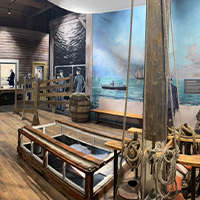
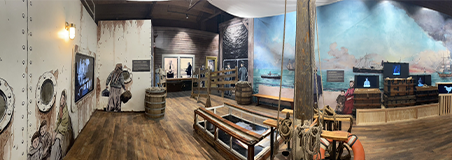

Before Ellis Island, hundreds of thousands of immigrants entered the US at the Galveston Port in search of freedom. Interact with the 'Ship To Shore' experience and follow in the footsteps of early immigrants, from their long sea voyage to arrival.
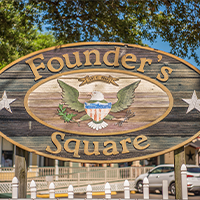


Stroll through this Historic District to view dozens of iconic homes under the canopies of ancient live oaks. Enjoy a quiet stroll along your way through gardens and parks. Access the tour map here.
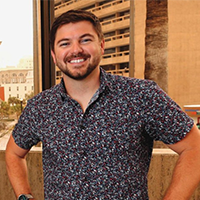
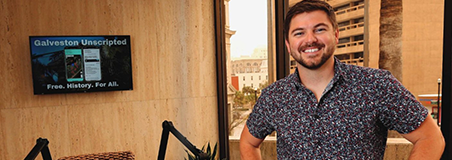
Listen to the “Galveston Unscripted” podcast for audio guides of landmark sites, as well as fascinating interview episodes that will bring rich historical context to your visit!
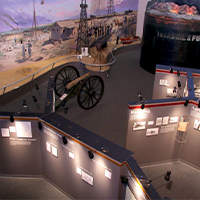
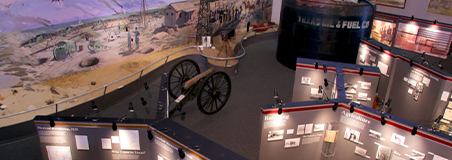
Nearly forty years after the Civil War, the discovery of oil and building of infrastructure to support it offered new opportunities for African Americans and Cajun migrants wanting to make their own futures. This Museum highlights the cultural influences of these and later migrants, as well as the array of musicians, athletes, and artists who called this region home.
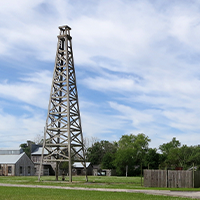
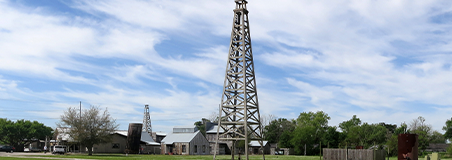
In 1901, the Spindletop gusher rocketed this region—and the world—into the modern petroleum age. Tens of thousands came to the area, launching oil companies and building the infrastructure needed to support the industry and surging population. Near the original gusher site sits a boomtown replica ready for you to explore.



These side-by-side museums pay tribute to the Dutch and Cajun people who came to this area and whose cultural influences are ever present today. Revel at the artifacts and furnishings of the early 20th century at these sites.

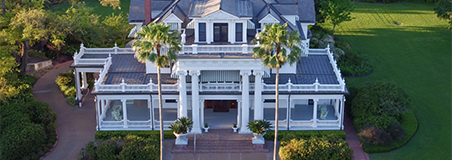

See the historic homes of two prominent Texans who made their fortunes from the abundant land, sea, and mineral resources in the region. Learn about the families and local history as you enjoy a tour of the antique homes and grounds.
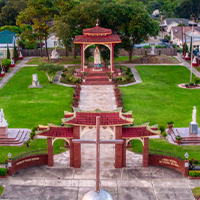
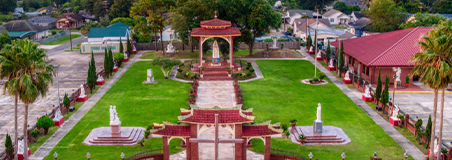
Walk the stations of the cross in this “Area of Peace” built as a tribute to Port Arthur for welcoming Vietnamese refugees. This site is part of the Faith Trail which highlights the many religious communities with roots in this region.





